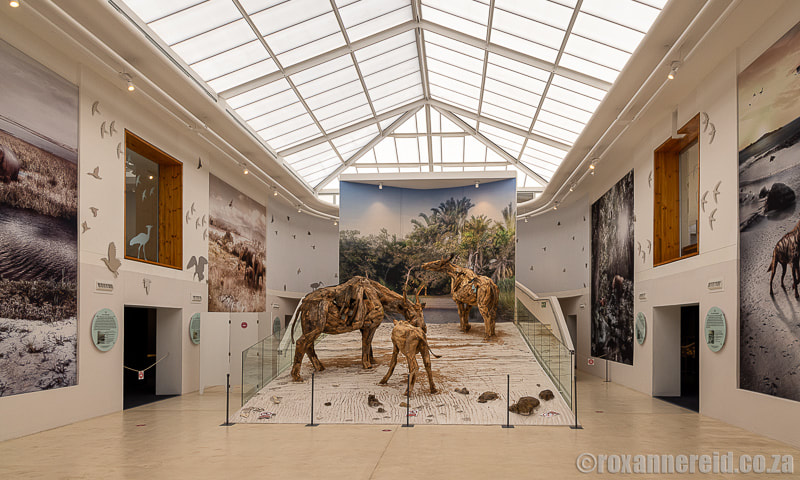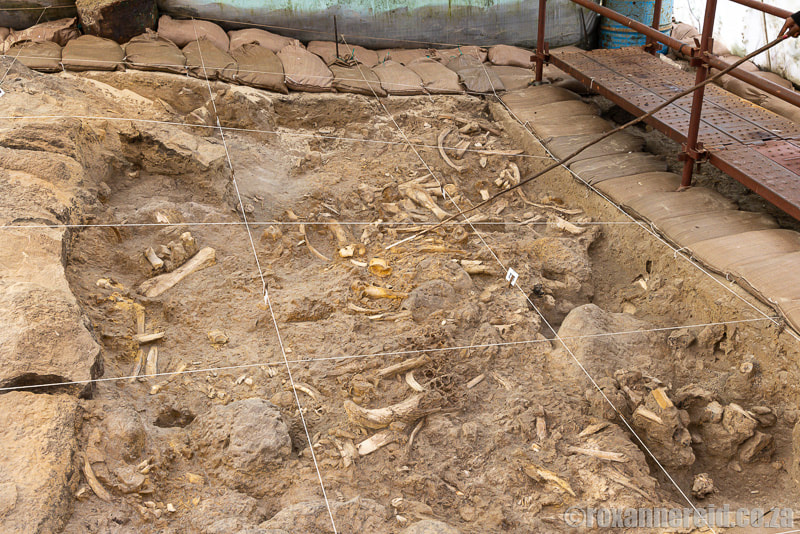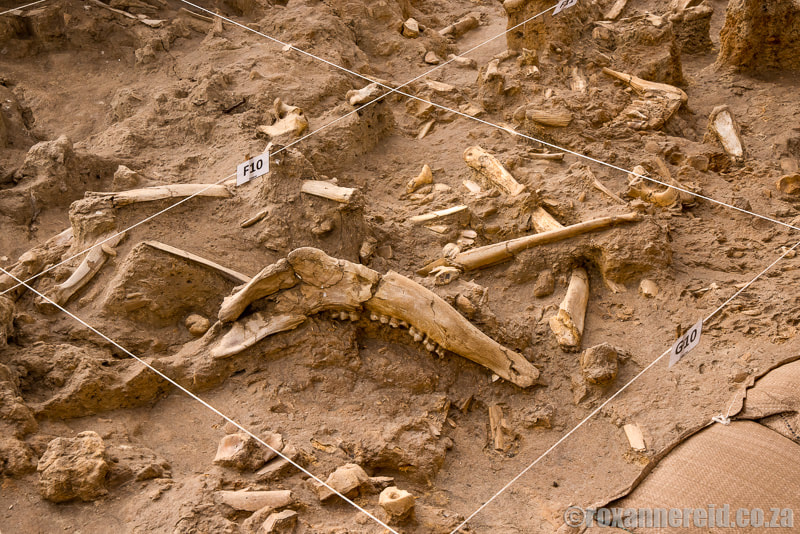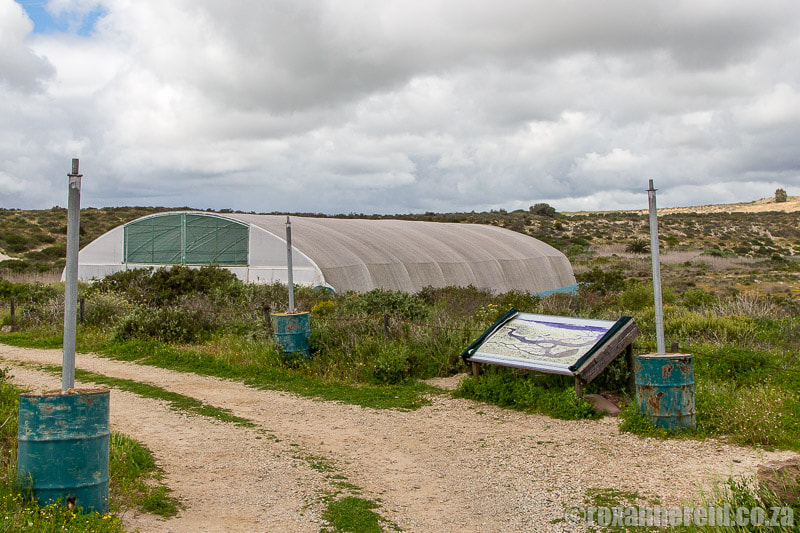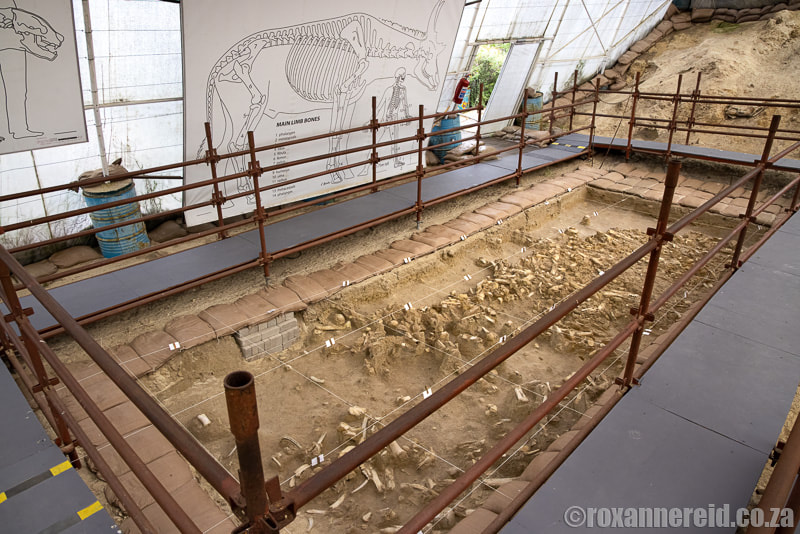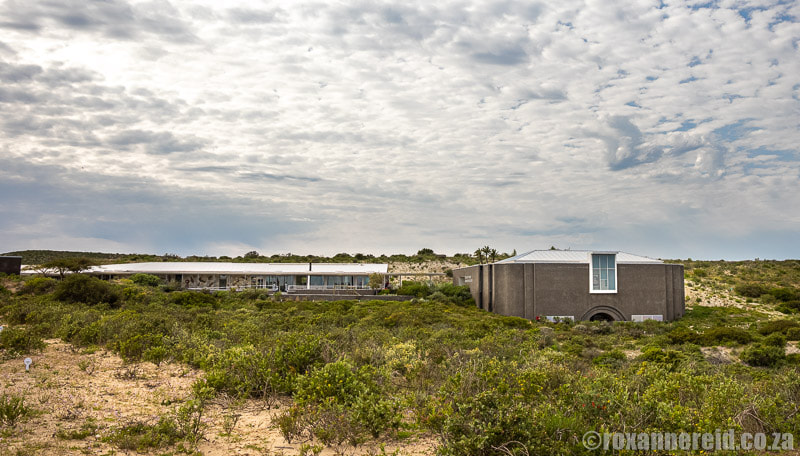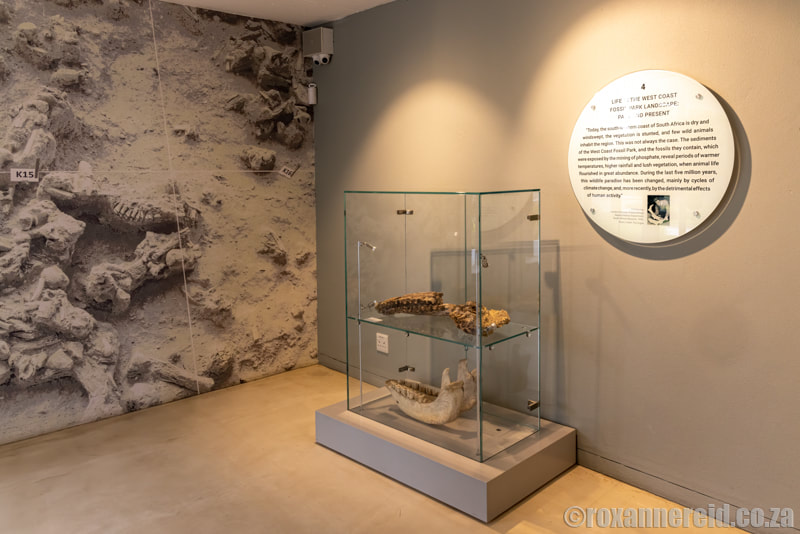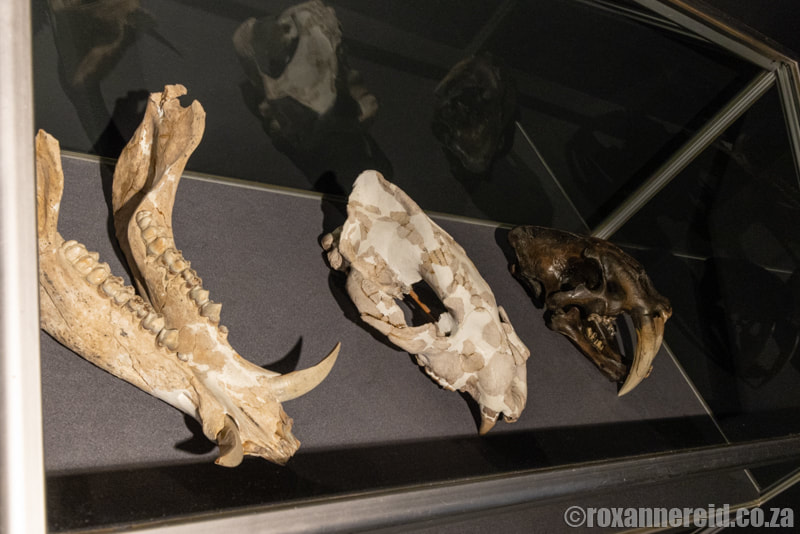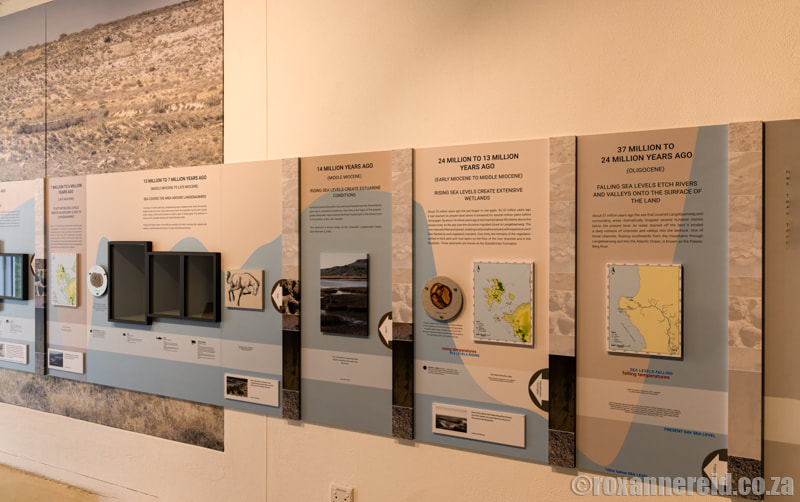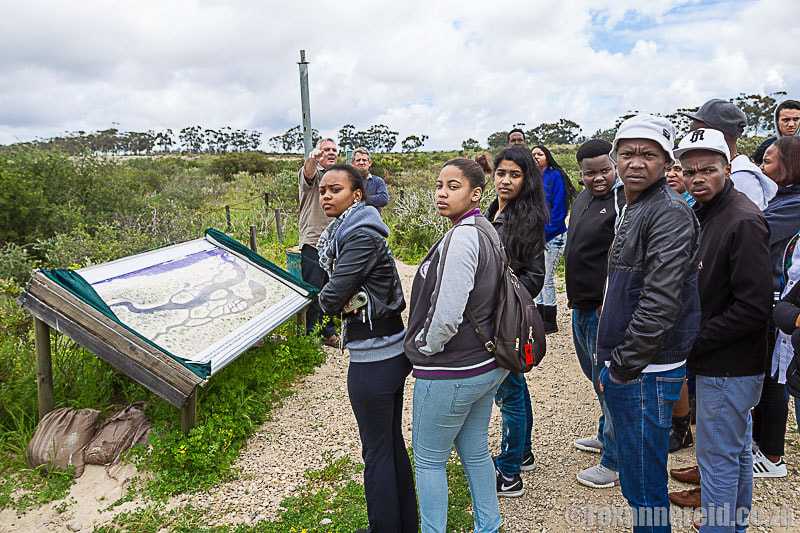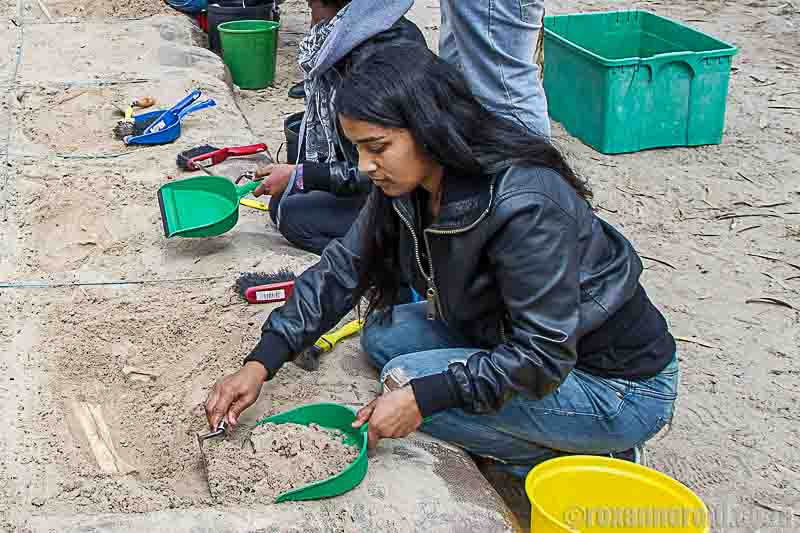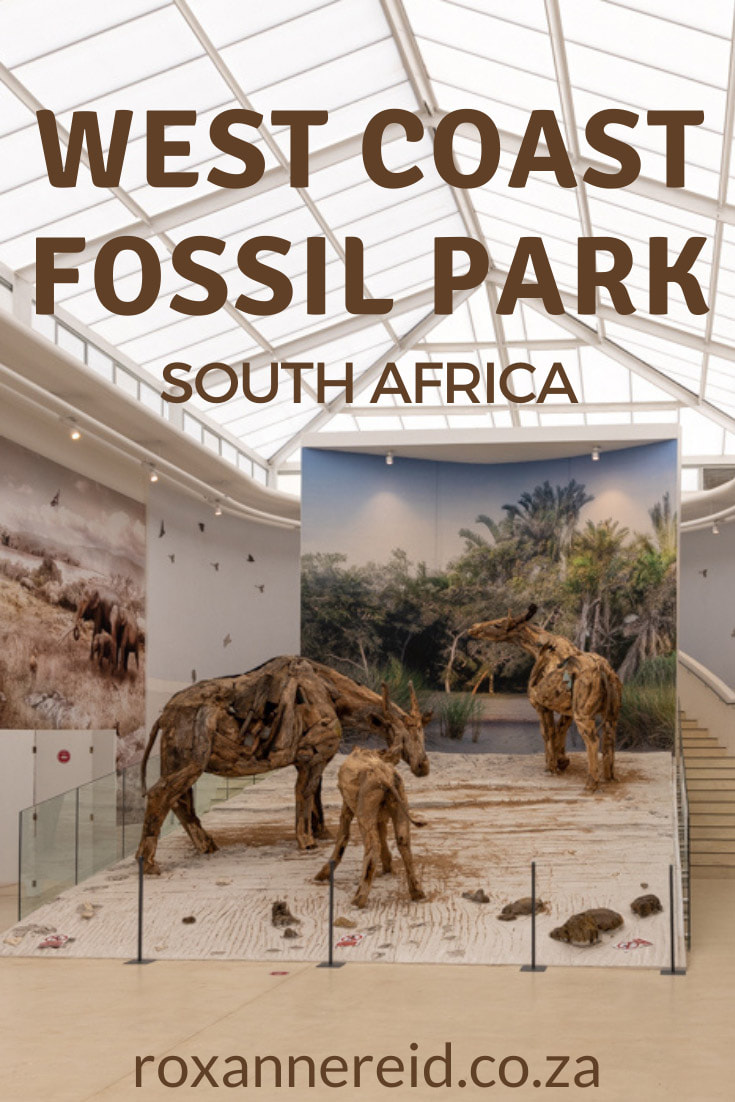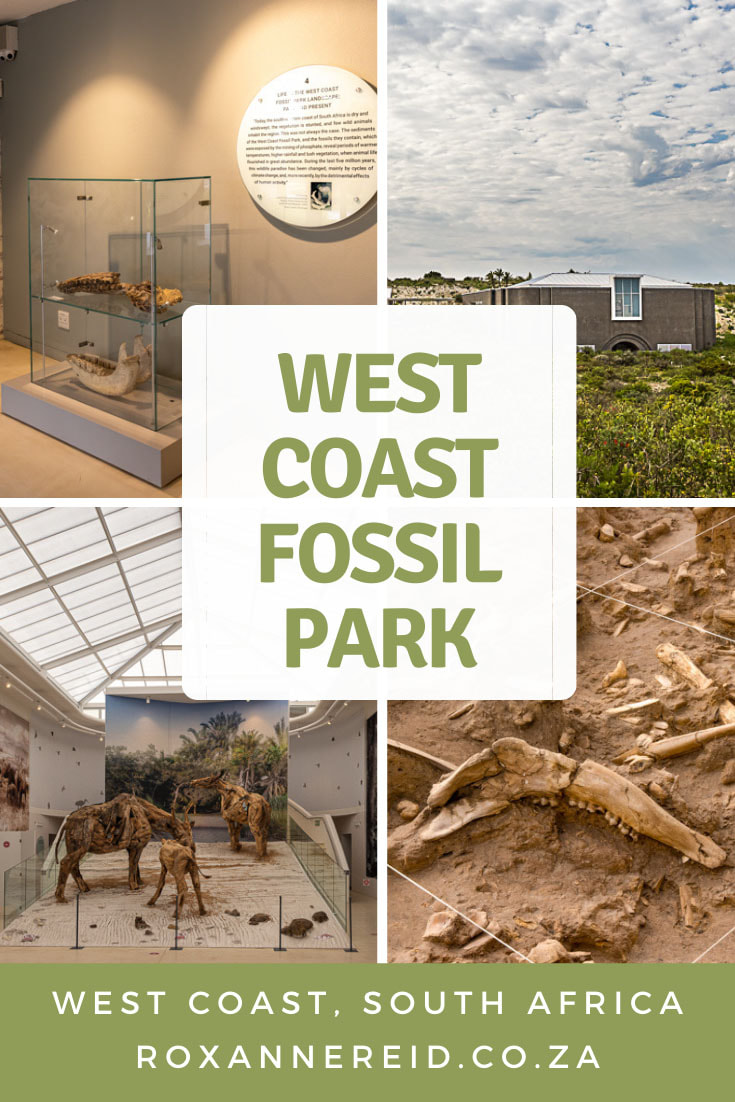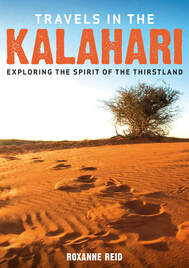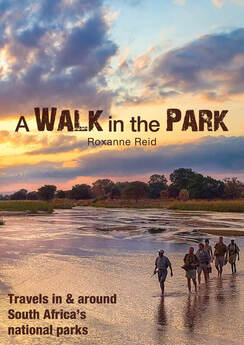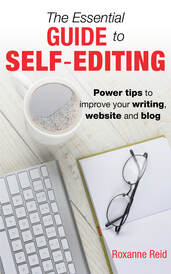Drive about 90 minutes north of Cape Town and you’ll find a strange place where giant creatures roamed long before the appearance of man on Earth. Here at this heritage site a fascinating journey has been quietly waiting more than five million years for you. Find out why you should visit the West Coast Fossil Park.
Step back in time. This is the West Coast, but not as we know it. Gone are the Sandveld and the Mediterranean climate. In their place are lush subtropical forests, open grasslands and an estuary with lots of water.
Sivathere, a short-necked giraffe, and some of her buddies are trying to cross a river swollen with flood waters, convinced the grass is greener on the other side. It’s a mistake. Many of them get swept away by the current and drown.
But instead of being washed out to sea, their bodies become trapped by an outcrop of phosphate rock. You might think Sivathere is this story’s main character, but she’s not. The outcrop is – because if it didn’t trap the bodies here none of this story would be known today.
Hyenas and vultures have a field day, feasting on the flesh of Sivathere and her friends, and exposing the bones. Years pass. Sediment covers the bones and protects them from the elements. Over the next hundred years or so the sea level rises steadily and water floods the valley. The bones are buried deeper and deeper under layers of sand.
There they lie for millions of years, bone slowly turning to stone. And that’s how the West Coast Fossil Park’s story began.
Fast forward five million years to 1976 when some of these buried fossils were uncovered during phosphate mining on the West Coast. Although mining stopped here in 1993 it’s thought that many tons of fossils were crushed up with rocks before anyone knew they were there. ‘Something like 80% of what there once was has probably been destroyed,’ guide Martina Mabuza told us. Since the phosphate rock was turned into fertiliser, you or your parents may have spread crushed five-million-year-old fossils on your lawn without knowing it.
Tour a dig site
Martina took us on a short walk to a dig site protected from the elements by a shade-net dome. On the Anysberg hill nearby, Stone Age tools have been discovered, but our focus was to go back much earlier than the appearance of man in the area. Inside the dome, cables divide the site into one-metre squares. There are so many fossilised bones, it’s hard to believe they all ended up here naturally and haven’t just been collected for display.
In another section of the dig site, Martina drew our attention to the jawbone of a hippo and parts of a baleen whale and seal, showing how land-based mammals like sivatheres, freshwater mammals like hippos, and marine mammals were all buried together in this place.
The exhibition hall
When we first visited the West Coast Fossil Park a few years back, the visitor centre was rather cramped and dingy in what used to be the phosphate mine’s offices. In December 2017, a swish new visitor centre opened, with a museum, education centre and restaurant. Built using R67 million from the National Lotteries Commission, it stands on a rise overlooking the dig site where visitors can see for themselves the amazing number of fossilised bones.
It makes you understand how much the environment has changed over the past 37 million years, and how important it is that we protect what we have now for the Earth’s future.
In a sheltered courtyard outside the exhibition hall, enjoy the garden that has been created using plants similar to those that occurred here five million years ago. You’ll notice palm trees, cycads, and tree ferns in what used to be rich subtropical vegetation, which is very different from the scrubby fynbos we know today – all the result of a change of climate.
10 cool facts about West Coast fossils
- Fossils have proved that now-extinct animals used to live here, like sabre-toothed cats, short-necked giraffes (sivatheres), African bears and three-toed horses.
- Fossil bones discovered here vary in size, from the tiny the ear bones of a golden mole to the huge jawbone of a whale.
- The African bear stood 3m high when on its hind legs and weighed up to 750kg. Given that the grizzly bears of North America today are about 2m on their hind legs and weigh around 300kg, the African bear must have been pretty darn intimidating. In fact, it was probably the biggest land-based carnivore in southern Africa in the last 15 million years.
- A mammoth also lived here, the earliest known ancestor of the more well-known woolly mammoths of the Northern Hemisphere. So mammoths had their origin in Africa.
- The West Coast used to have a more subtropical climate, with lush riverine forest and open grasslands. Scientists know this because pollen fossilises well and they’ve identified various subtropical plants from these deposits. In fact, pollens are the smallest fossils found here, so tiny they need to be viewed under a microscope.
- There are no complete skeletons of hippos, but scattered jawbones, teeth, foot and skull bones have been found. Since hippos depend on water, we know that this area used to have water – an estuary.
- The area is one of the richest fossil bird sites in the world that are more than two million years old. Some 10 000 fossil bird bones from around 80 species have been found, from tiny birds to an ostrich slightly bigger than the one we know today.
- Honeyguides and some other birds appeared in the fossil record for the first time in this area; there are no known earlier fossil records of these birds.
- At least four species of penguins used to live here, not just the single species that survives in the southern Cape today.
- The diversity of birds found here – including sub-Antarctic marine species – shows that the environment and climate changed around five million years ago and the winter rainfall pattern of the Western Cape was possibly being established during those times.
Things to do at West Coast Fossil Park
1. Take a guided fossil tour to an actual dig site to see bones of the short-necked giraffe and other animals where they have been uncovered. It’s a fascinating insight into a place that holds the keys to unlock the deep history of the West Coast. You can book online.
3. Hire a mountain bike (or bring your own) to enjoy one of the four mtb trails at the site. Choose from 3km, 5km, 8km and 10km, depending on your staying power.
4. Go on one of four walking trails to see some birds and plants and to enjoy the views towards Saldanha and Vredenburg. The trails are beautiful in August and September when the spring flowers are in bloom.
5. Book ahead with the educational centre for kids or students to take up a trowel and paintbrush at a mock dig, where they can have fun learning what it’s like to be a palaeontologist. On our first visit to the Fossil Park, we watched young tourism students really enjoying this hands-on part of their experience.
7. If you’re a keen birder, book a guided walk with a bird boffin for a chance to see and photograph typical West Coast species.
8. Visit the shop at the visitor centre to pick out a memento to take away with you, from T-shirts and scarves to toiletries, mugs and books.
Need to know
- Find the West Coast Fossil Park between the West Coast towns of Hopefield and Langebaan; it’s on the R45, 23km northwest of Hopefield, just beyond where the R45 joins the R27 to Langebaan.
- Open Wednesday, Thursday, Friday, Saturday 09:00 - 15:00
- Book and pay online
- Contact details: tel 022-7661606, email [email protected]
- Website https://fossilpark.org.za
You may also enjoy
How to become a fossil
West Coast National Park: the ultimate guide
8 things to do in and around Hopefield
